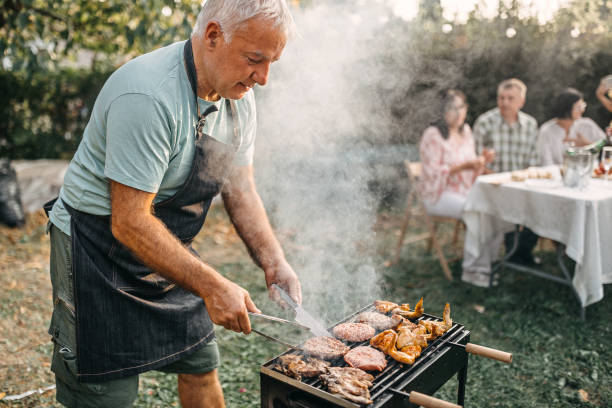The History of Aprons: A Fascinating Journey Unwoven
Written By James Morgan
The intriguing tale of aprons stretches back far beyond the kitchen, far further back than we would imagine in the modern barbecue scene. To understand its evolution and significance, one must first recognize the pivotal role the humble apron has played throughout historynot just in the domain of culinary arts, but also amidst the smoke and sizzling grill lines that captivate and alert our senses during a Sunday barbecue. This journey through time takes us from the rudimentary beginnings to its present-day incarnation.

Biblical Beginnings
Long before the idea of a backyard barbecue became a weekend institution, humans donned aprons for practical purposes. For example, aprons of the biblical era, as seen in some historical texts, were quite basic, often made from simple materials like fig leaves and animal skins. These early versions served more practical needs than fashion or profession-driven ones, yet marked the advent of the apron as a protective garmenta concept still crucial during modern grilling sessions.
The Middle Ages: Prestige and Protection
The evolution of aprons continued into the Middle Ages when they gained more structure and symbolic meaning. Artisans, blacksmiths, and other craftsmen, akin to todays seasoned grill masters, opted for heavier, durable aprons to shield them from flames, sparks, and other occupational hazards. These aprons signified expertisemuch like how a well-worn barbecue apron today can symbolize a seasoned enthusiast's prowess at the grill.
For further reading on various apron styles that trace their heritage from these historical functions, you can visit this guide.
The Renaissance Period: Fashion Meets Function
As society advanced into the Renaissance, aprons began to blend functionality with fashiona transformation evident among chefs today who blend skill with style. During this era, aprons became more ornate, with colors and fabrics reflecting social status, much like how a personalized barbecue apron can reflect one's individuality and love for grilling.
Discover more about why chefs wear aprons and their varied purposes here.

Modern Day Aprons: Unifying Tradition and Innovation
While aprons have developed in design and purpose over time, they continue to hold significant value in the vibrant world of barbecuing today, unifying tradition and novel innovation. From traditional bib aprons to waist aprons that keep grill utensils close at hand, today's aprons cater to specific needs and personal preferences of every enthusiast.
Looking for ideas on how to engage more effectively with your barbecue gear? Explore the purpose of aprons.
For an extensive overview of contemporary apron styles, delve into this informative external link.
Conclusion: The Apron as a Symbol of Mastery
Whether it's serving as armor against the smoky breath of an open flame or as a canvas for one's passion and personality, the apron remains a symbol of knowledge, skill, and dedication. Just as every barbecue enthusiast treasures their toolkit of recipes, tongs, and spatulas, the apron endures as a vital facet of the grilling tradition.
Frequently Asked Questions
- Why are aprons important in grilling? Aprons offer protection against splashes, burns, and marks, while also providing handy pockets for tools and recipes, much like understanding the smoke point of olive oil protects against oil burns.
- What fabric is best for barbecue aprons? Heavy-duty cotton and leather are preferred for their durability and resistance to heat, matching the robustness required in grilling even for simpler culinary tasks.
- Can apron styles improve grilling expertise? Absolutely. Select designs with maximum functionality for your specific grilling habits. This complements efficient cooking techniques like those explained in ' pressure cooking and grilling methods. '



